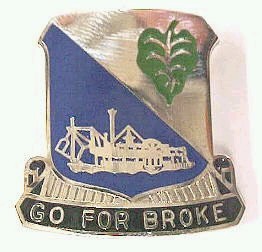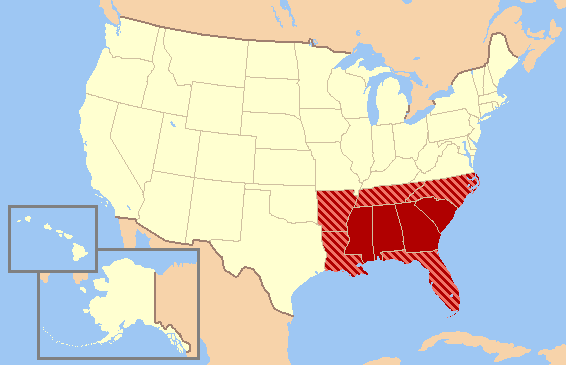-From the
Delta Democrat-Times of Greenville, Miss. Published Aug. 27, 1945
Company D of the 168th Regiment which is stationed in Leghorn, Italy, is composed altogether of white troops, some from the East, some from the South, some from the Midwest and West Coast.
Company D made an unusual promise earlier this month. The promise was in the form of a communication to their fellow Americans of the 442d Infantry Regiment and the 100th Infantry, whose motto is "Go For Broke," and it was subscribed to unanimously by the officers and men of Company D.
In brief, the communication pledged the help of Company D in convincing "the folks back home that you are fully deserving of all the privileges with which we ourselves are bestowed."
The soldiers to whom that promise was made are Japanese-Americans. In all of the United States Army, no troops have chalked up a better combat record. Their record is so good that these Nisei were selected by General Francis H. Oxx, commander of the military area in which they are stationed, to lead the final victory parade. So they marched, 3,000 strong, at the head of thousands of other Americans, their battle flag with three Presidential unit citationed streamers floating above them, their commander, a Wisconsin white colonel, leading them.
Some of those Nisei must have been thinking of the soul-shaking days of last October, when they spearheaded the attacks that opened the Vosges Mountain doorway to Strasbourg. Some of them were probably remembering how they, on another bloody day, had snatched the Thirty-Six Division's lost battalion of Texans from the encircling Germans. And many of them were bearing scars from those two engagements which alone had cost the Nisei boys from Hawaii and the West Coast 2,300 causalities.
Perhaps these yellow-skinned Americans, to whose Japanese kinsmen we have administered a terrific and long overdue defeat, were holding their heads a little higher because of the pledge of their white fellow-soldiers and fellow-Americans of Company D. Perhaps, when they gazed at their combat flag, the motto "Go For Broke" emblazoned thereon took a different meaning. "Go for Broke" is the Hawaiian-Japanese slang expression for shooting the works in a dice game.
The loyal Nisei have shot the works. From the beginning of the war, they have been on trial, in and out of uniform, in army camps and relocation centers, as combat troops in Europe and as frontline interrogators, propagandists, and combat intelligence personnel in the Pacific where their capture meant prolonged and hideous torture. And even yet they have not satisfied their critics.
It is so easy for a dominant race to explain good or evil, patriotism or treachery, courage or cowardice in terms of skin color. So easy and so tragically wrong.
Too many have committed that wrong against the loyal Nisei, who by the thousands have proved themselves good Americans, even while others of us, by our actions against them, have shown ourselves to be bad Americans. Nor is the end of this misconception in site. Those Japanese-American soldiers who paraded at Leghorn in commemoration of the defeat of the nation from which their fathers came, will meet other enemies, other obstacles as forbidding as those of war. A lot of people will begin saying, as soon as these boys take off their uniforms, that "a Jap is a Jap," and that the Nisei deserve no consideration. A majority won't say or believe this, but an active minority can have its way against an apathetic majority.
It seems to us that the Nisei slogan of "Go For Broke" could be adopted by all Americans of good will in the days ahead.
We've got to shoot the works in a fight for tolerance.
Those boys of Company D point the way. Japan's surrender will be signed aboard the
Missouri and General MacArthur's part will be a symbolic "Show Me."









